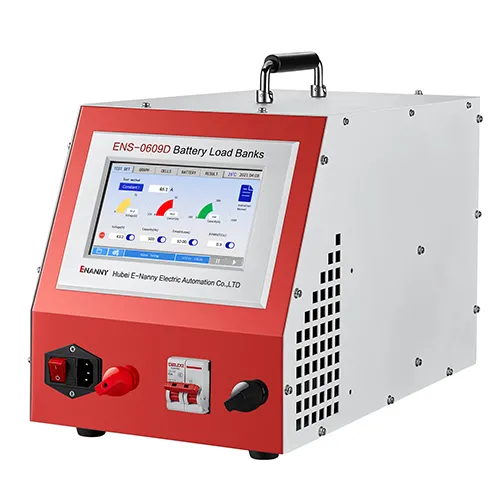In an age where our lives are increasingly powered by batteries, understanding their capacity and health is more crucial than ever. Enter the world of battery capacity testers – sophisticated devices that not only reveal the secrets of battery longevity but also ensure the reliability of our gadgets. So, How do battery capacity testers work?

Battery capacity testers are pivotal in assessing the actual storage capacity of a battery, which can differ significantly from the nominal capacity stated by manufacturers. These devices work by applying a load to the battery and measuring the discharge characteristics to calculate the available ampere-hours (Ah) or milliampere-hours (mAh).
The Science Behind Battery Capacity Testing
The principle of battery capacity testing is relatively straightforward. A battery is charged to its full capacity and then discharged through a resistive load while the voltage, current, and time are monitored. The capacity tester measures the energy output until the battery reaches its cut-off voltage, which is the point where the battery is considered fully discharged.
The Core Components
A typical battery capacity tester consists of several key components:
1. Load Resistor: This is the element that simulates the power draw from a battery. High-quality testers use electronic loads that can vary the resistance to simulate different discharge scenarios.
2. Voltage and Current Sensors: These sensors are crucial for accurate measurements. They track the battery's voltage and the current flowing through the load resistor throughout the discharge cycle.
3. Microcontroller: The brain of the tester, a microcontroller, is responsible for controlling the discharge process, collecting data from sensors, and computing the battery capacity.
4. Display or Interface: To communicate the results to the user, a display or interface is provided. Advanced models may also include connectivity options like USB or Bluetooth for data logging and analysis on a computer or smartphone.
The Testing Process
The testing process involves several steps:
1. Initialization: The battery is charged to its maximum capacity under controlled conditions to ensure accuracy.
2. Discharge: The tester applies a specific load to the battery and begins the discharge process. The rate of discharge, often referred to as the C-rate, is selected based on the battery type and application.
3. Monitoring: Throughout the discharge cycle, the tester continually monitors the voltage and current.
4. End of Test: Once the battery reaches its cut-off voltage, the tester stops the discharge and calculates the capacity based on the energy consumed.
5. Analysis: The tester may provide additional data analysis, such as the discharge curve, which can give insights into the battery's health and efficiency.
The Importance of Battery Capacity Testing
Battery capacity testing is not just about knowing how long a battery will last. It's a critical tool for various applications:
- Quality Control: Manufacturers use capacity testers to ensure that batteries meet specified standards before they hit the market.
- Maintenance: In industries where batteries are critical, such as in UPS systems or electric vehicles, regular capacity testing can predict when a battery will need to be replaced.
- Research and Development: Scientists and engineers use advanced capacity testers to develop new battery technologies and improve existing ones.
Advancements in Battery Capacity Testing
With the rise of renewable energy and electric mobility, the demand for more sophisticated battery capacity testers has grown. Modern testers can now handle a wide range of battery types, from small coin cells to large industrial batteries, with features like temperature monitoring and cycle life testing.
The Future of Battery Capacity Testing
As battery technology evolves, so too must the tools we use to evaluate them. Future capacity testers will likely incorporate artificial intelligence to predict battery lifespan and performance more accurately. Wireless testing and in-situ diagnostics may also become commonplace, allowing for real-time monitoring of battery health in various applications.
In conclusion, battery capacity testers play a vital role in ensuring the performance and longevity of batteries. As we move towards an increasingly electrified future, these devices will continue to be indispensable in the quest for reliable and efficient power storage solutions.
 English
English
 Español
Español
 Português
Português
 русский
русский
 français
français
 日本語
日本語
 Deutsch
Deutsch
 Tiếng Việt
Tiếng Việt
 Italiano
Italiano
 Nederlands
Nederlands
 Pilipino
Pilipino
 Türk
Türk
 Gaeilge
Gaeilge
 عربى
عربى
 Indonesia
Indonesia
 norsk
norsk
 čeština
čeština
 Ελληνικά
Ελληνικά
 فارسی
فارسی
 தமிழ்
தமிழ்
 Српски
Српски
 Català
Català
 עִברִית
עִברִית
 Galego
Galego
 Беларус
Беларус
 Hrvatski
Hrvatski
 ជនជាតិខ្មែរ
ជនជាតិខ្មែរ
 Кыргыз тили
Кыргыз тили
 O'zbek
O'zbek
 Lëtzebuergesch
Lëtzebuergesch
 ไทย
ไทย
 Polski
Polski
 한국어
한국어
 Svenska
Svenska
 magyar
magyar
 Malay
Malay
 বাংলা
বাংলা
 Dansk
Dansk
 Suomi
Suomi
 हिन्दी
हिन्दी
 български
български
 ລາວ
ລາວ
 Latine
Latine
 Қазақ
Қазақ
 Euskal
Euskal
 Македонски
Македонски
 Lietuvos
Lietuvos
 Eesti Keel
Eesti Keel
 Română
Română
 मराठी
मराठी




